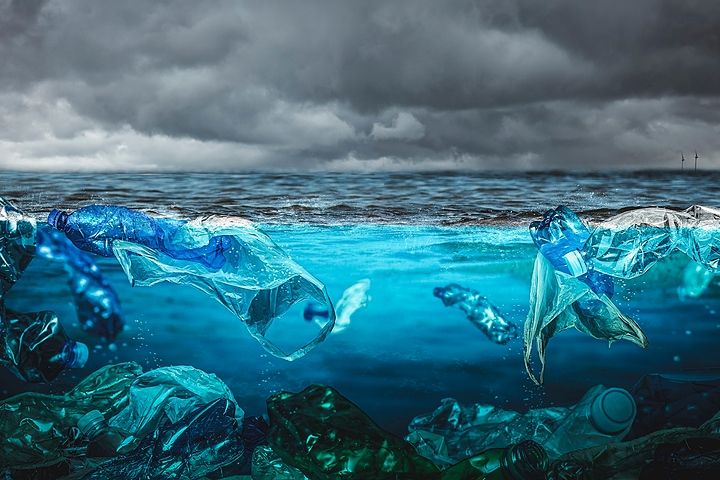MARINE LITTER
Need for better management of plastics waste – CleanHub report / “Shocking” levels of ocean plastics
By Elaine Burridge
A new report by German start-up CleanHub (Berlin; www.cleanhub.com) highlights a need for better plastics waste infrastructure and management as it details the “devastating” amount of plastics pollution in the world’s oceans.
A new report by German start-up CleanHub (Berlin; www.cleanhub.com) highlights a need for better plastics waste infrastructure and management as it details the “devastating” amount of plastics pollution in the world’s oceans.
 Scientists say in 2050 there might be more plastics floating in the ocean by weight than fish (Image: PantherMedia/tiero) |
The report, entitled How Much Plastic is in the Ocean?, finds that China, India, and Brazil mismanage the most waste, mainly because of poor infrastructure and overspilling landfills, while the former two countries plus the USA produce the most plastics waste every year.
Related: CleanHub works to boost plastics waste collection, recycling in low-income countries
Despite efforts by many countries – including China, the US, and the UK – to restrict single-use plastics (SUPs), plastic bags are a major source of ocean pollution. They break down quickly into microplastics and have been ingested by about 56% of all marine life, according to CleanHub.
Plastic straws are another big problem, with up to 8.3 bn of them found on shorelines around the world and accounting for around 40% of plastics waste by item.
Related: New Jersey sees rise in polymer consumption, GHG emissions following SUP ban
Many plastic bottles also end up in the ocean, but CleanHub says it is hard to know exactly how many. However, it does say that there are 150 waste plastic bottles for each mile of beach in the UK.
The research shows that the UK is the second biggest producer of plastics waste per person per year at 99 kg, with the USA leading at 105 kg.
Related: OECD: plastics waste volumes could nearly triple by 2060
CleanHub’s analysis also finds that the fishing industry is responsible for around 10% of ocean waste. Termed “ghost” fishing gear, the waste comprises nets, traps, and lost lines. Some of the ghost nets are kilometres long, often trapping marine life, sometimes as large as sperm whales.
According to the analysis, 14 mn t of plastics enter the oceans annually and an estimated 80% of ocean-bound plastics come from Asian countries, although much of it is shipped in from abroad.
Related: European plastics waste exports highest since 2021
The research shows that up to 11 mn t of plastics waste is sitting on the seafloor, where there are 10,000 times more plastic particles than on the surface. In addition to larger pieces of plastics waste, research estimates more than 14 mn t of microplastics at the bottom of the ocean.
On the surface, it is estimated that there are 358 tn microplastic particles.
“Ocean plastics pollution is one of the biggest environmental issues of our time. It continues to grow to shocking levels, and affects not only marine life but people too through its impact on the entire ecosystem. Products must be created with their end-of-life in mind and we need to build better infrastructure to deal with the huge amounts of waste,” states CleanHub’s vice-president of marketing, Nikki Stones.
She adds that introducing effective waste management and transforming waste materials into something useful on a much larger scale are the solutions. “Without these solutions in place around the world, ocean pollution will only continue to increase,” Stones says.
Related: Fourth session of UN plastics waste treaty sees some convergence on waste management
To back up her comments, CleanHub says plastics production is forecast to expand by 10% within the next decade. In addition, production of SUPs, which increased to 137 mn t in 2021, is expected to rise 17 mn t by 2027.
While the Berlin-based NGO says it is difficult to predict the future of ocean plastics waste, the report’s findings are clear – essentially, if the mismanagement of plastics waste does not stop, it will get worse.
Indeed, by 2050, there could be more plastics than fish in the oceans by weight, according to the research.
14.05.2024 Plasteurope.com [255099-0]
Published on 14.05.2024
